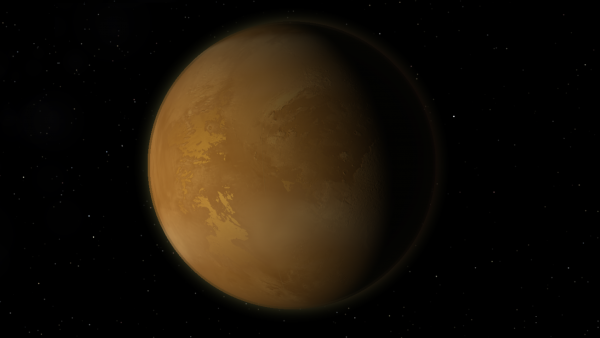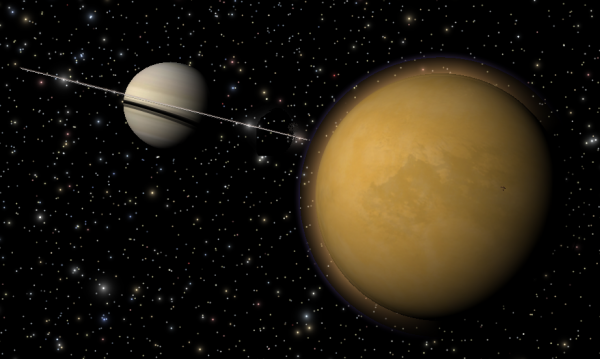BY LETTER
Titanian type world
Icy worlds with thick atmospheres | |
 Image from Steve Bowers | |
| Uacilla, a titanian world with seas of tarry ethane | |
Within the context of the Non-Luminary World Classification Scheme, Titanian Worlds are planets of varying size and masses found beyond the snow line, but which have managed to develop thick atmospheres and a geologically dynamic surface. The atmospheres of these worlds are typically made of nitrogen and large quantities of methane, eathane and other hydrocarbons. Depending on the dynamics of the world, a hydrocarbon or methane liquid cycle may also be present. Water is also present on these worlds, but because the planets are so cold, the water ice is a mineral with a Mohs hardness of 6-7, and indeed plays a similar role to rock on Gaian worlds.
 Image from Steve Bowers | |
| Titan, in the Old Solar System | |
Biospheres
 Image from Steve Bowers | |
| Muuhome is an example of a Titanian world with a cold-temperature biosphere. Energy-collecting autotrophs in the Muuh biosphere give this world its distinctive colour. | |
Examples: Titan; Muuhome.
Related Articles
Appears in Topics
Development Notes
Text by John M. Dollan
Initially published on 18 November 2008.
Initially published on 18 November 2008.






